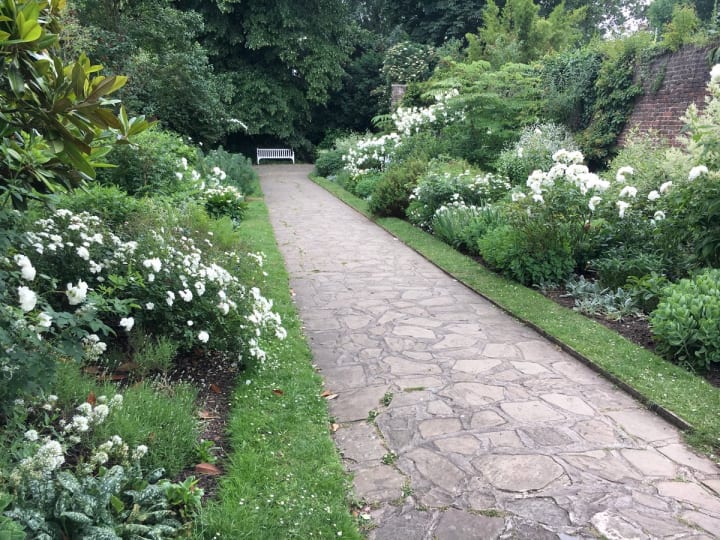This is Streatham Common Carefully Hidden Secret
Nestled in a little-explored part of Streatham Common, is a lovely secret garden you don’t want to miss.

London is a city of over nine million people—with 14,000 residents per square mile—is packed with wildlife. Almost 15,000 species live here. There are nearly as many trees in London as people, and almost half of its urban areas are either green or blue region, showing rivers, canals, and reservoirs.
The green area in central London consists of five of the capital's eight Royal Parks, plus several small garden squares scattered throughout the city centre. Green open areas in the remainder of the region is dominated by the other three Royal Parks and many other parks and public areas of a range of sizes, governed primarily by the local London boroughs.
London is made of 40% public green space, including 3,000 parks and totalling 35,000 acres.
In July 2019, London was officially confirmed as the world's first National Park City.
You have no excuse not to go out and explore all the beautiful parks in London.
Some are less knows than others. But, that doesn't mean they have less history or beauty. Here, we are going to learn a little more about a park in South-West London:
Streatham Common
Streatham Common is an old common property of the south Streatham manor on which the manorial occupants had the right to graze their animals and collect combustible.
In 1362, the Black Prince gave the Manor of South Streatham, which incorporated the Common, to the Prior and Convent of Christ Church, Canterbury, from whom it passed to the Dean and Chapter after the monasteries were dissolved, and in 1862, to the Ecclesiastical Commissioners.
In 1659 Streatham wells were discovered and used as a tourist attraction. Well-House was built in 1783 and renamed The Rookery later. In the early 1790s, after the water was contaminated, a new well was dug out on Valley Road.
In 1884 the Metropolitan Works Council bought Streatham Common from the Ecclesiastical Commissioners, maintaining it as a public open space.
Streatham Common is a vast open space on the southern outskirts of Streatham.
The lower (western) lightly sloping part of the common is principally mowed grass, and the top (eastern) area is woodland, with some small patches of gorse scrub and acid grassland.
The eastern half was designated as Local Nature Reserve.
During the first part of the 20th century Streatham's well water, which was claimed to contain three times the mineral quantity of Epsom's, was distilled and sold locally.
In 1911, to save the site from development, The Rookery and the adjacent Hilly Four Acres field was acquired by public subscription and demolished the dilapidated house, and opened ts formal gardens to the public, in 1913.
The appeal committee that had acquired The Rookery was formed again in 1923 to save Norwood Grove from residential development. If now we have an almost connected set of green areas along the hill line from Streatham to Crystal Palace is thanks to it.
The vast lawn and terrace – with its magnificent cedar and surrounded by rhododendrons – are typical of Edwardian gardens. The 200-year-old cedar in the terraces is one of the oldest in the country.
The Rookery is a charming, formally landscaped area with an ornamental pond, flower and herbaceous areas, and a stream-filled rock garden.
Wide-ranging steps lead to the once walled Old English Garden, part of which is called the White Garden. Queen Mary and Princess Royal, who made a private visit in 1936, made this garden popular.

Today you can see one of the original wellheads and the cascade, and see some of the exotic plants including stunning azaleas, Japanese acers, gunneras and bamboos. The Streatham Society published a thoroughly illustrated garden history to mark its hundredth anniversary in 2013.
Laid out on the site of one of Streatham's celebrated mineral wells, the Rookery is well known for its ancient cedars and White Garden, which was intended to be in the same style as that at Sissinghurst Castle.

The Rookery is not only a formal landscaped garden
It also has woodland areas that are valuable for biodiversity and environmental education, and part of the old depot and nursery area includes a new community garden.
Just across the boundary of the borough is Norwood Grove
Another fine municipal garden, but surviving this time with his house; the building was once the residence of Arthur Anderson, one of the pioneers of the P&O shipping line.

The entire 66 acres Common and the Rookery gardens are part of the Streatham Common Conservation Area and Metropolitan Open Land. The Rookery is listed as a Grade II Garden of Historic Importance.
The sloping lawns and grassed terraces of The Rookery are cleverly used as an open-air theatre during the summer.
This is a hidden, sometimes forgotten corner of London's rich history.
About the Creator
Anton Black
I write about politics, society and the city where I live: London in the UK.






Comments
There are no comments for this story
Be the first to respond and start the conversation.